Any electric dog fence sold by K9 Electronics can be set up in the following ways. The Innotek IUC-4200 is referenced just as one example of a quality pet containment system.
Basic Installation Front and Back Yard
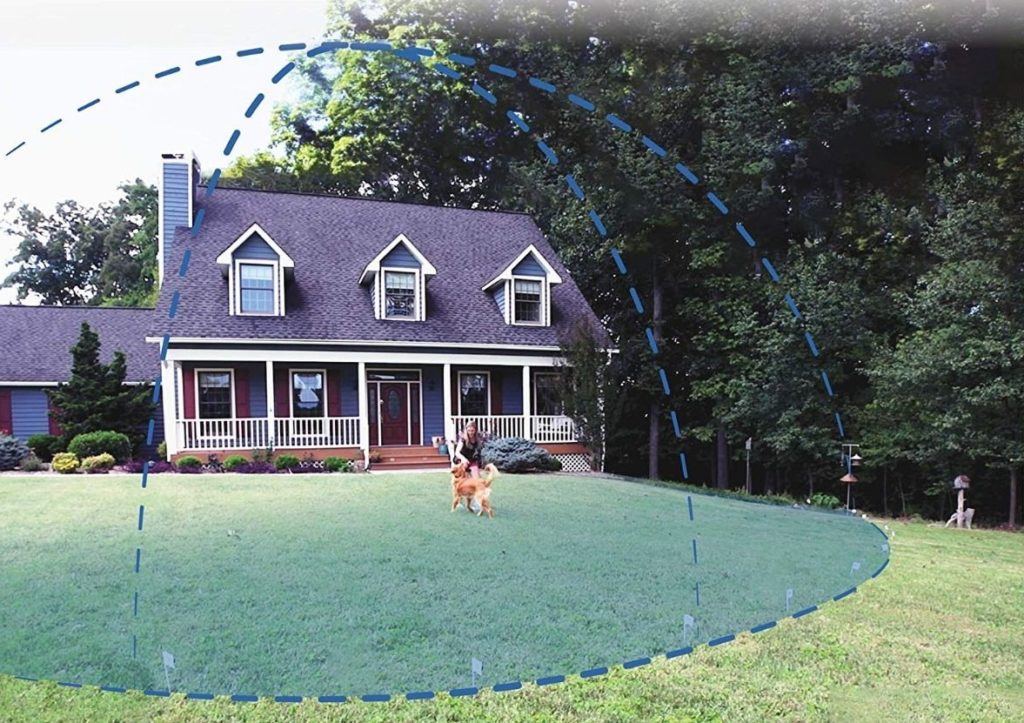
This type of boundary set up is probably the easiest and most common installation. The entire lot including your home is enclosed in the loop. Double Strand or Twisted Wire is used for the run from the transmitter (in Garage) to the perimeter. Using the Dual Strand Wire produces no boundary. 100 ft. of Dual Strand wire is included with the Innotek IUC-5100. You may purchase it separately for use with other systems or make your own by twisting 2 pieces of single strand boundary wire together.
You may cross a paved or concrete driveway by several methods:
- Run the wire through an existing seam or crack in the drive.
- Run the wire through an existing drainage pipe under the drive.
Caution: Since the wire will be deeper below ground your field width may be narrowed. We recommend you test the system in this area to be certain the collar is receiving a signal.
You may cut a concrete or paved drive using a circular saw with a masonry blade. After inserting the wire in the cut fill the cut with heavy caulk or asphalt patch.
Basic Installation Back Yard Only
 This type of boundary set up is very easy to install. The loop is used to enclose a defined area, such as the front or back yard.
This type of boundary set up is very easy to install. The loop is used to enclose a defined area, such as the front or back yard.
Double Strand or Twisted Wire is used for the run from the transmitter (in Garage) to the perimeter. Using the Dual Strand Wire produces no boundary. 100 ft. of Dual Strand wire is included with the Innotek IUC-5100. You may purchase it separately for use with other systems or make your own by twisting 2 pieces of single strand boundary wire together.
This type of installation does not give the dog access to the house.
Double Loop Installation Back Yard Only
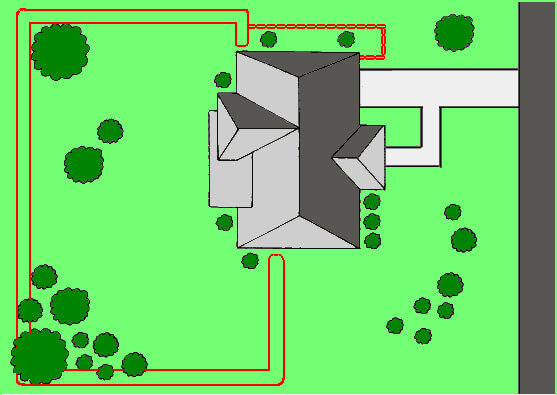
This type of boundary set up produces a double-wide field and can be fitted to most yards. The double loop is used to define 3 sides of the containment area and the house is used to define the fourth boundary. The 2 wires should be separated by 3-8 feet depending on your field width settings.
Double Strand or Twisted Wire is used for the run from the transmitter (in Garage) to the perimeter. Using the Dual Strand Wire produces no boundary. 100 ft. of Dual Strand wire is included with the Innotek IUC-5100. You may purchase it separately for use with other systems or make your own by twisting 2 pieces of single strand boundary wire together.
- We recommend this type of installation for most yards.
- This type of installation gives the dog access to the house.
- Can be used to produces a double-wide field.
- Can be fit to most yards.
This type of installation does require more wire than a single loop installation.
Caution: Take care to not create a gap between the fields. We recommend you lay the wire on top of the ground and test the system prior to burying the wire.
Double Loop Installation Back Yard with Pool or Shed
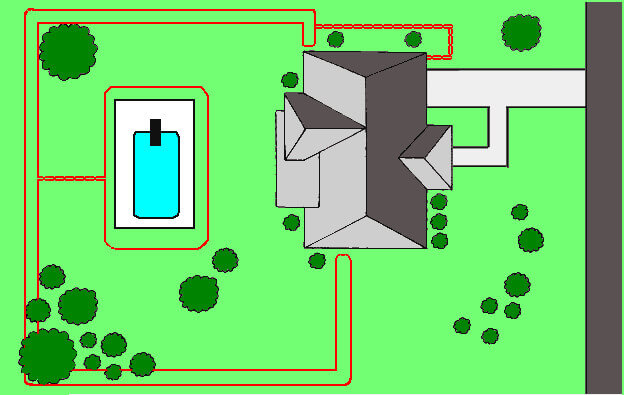
This type of boundary set up is a variation of the Double Loop Installation. This variation is used to define a containment area as well as deny your dog access to smaller areas, like a pool or tool shed, within the yard. Use Double Strand wire to connect the smaller inner loop to the boundary.
This type of boundary set up produces a double wide field and can be fit to most yards. The double loop is used to define 3 sides of the containment area and the house is used to define the fourth boundary. The 2 wires should be separated by 3-8 feet depending on your field width settings.
Double Strand or Twisted Wire is used for the run from the transmitter (in Garage) to the perimeter. Using the Dual Strand Wire produces no boundary. 100 ft. of Dual Strand wire is included with the Innotek IUC-5100. You may purchase it separately for use with other systems or make your own by twisting 2 pieces of single strand boundary wire together.
This type of installation gives the dog access to the house.
Double Loop Installation with Existing Fence
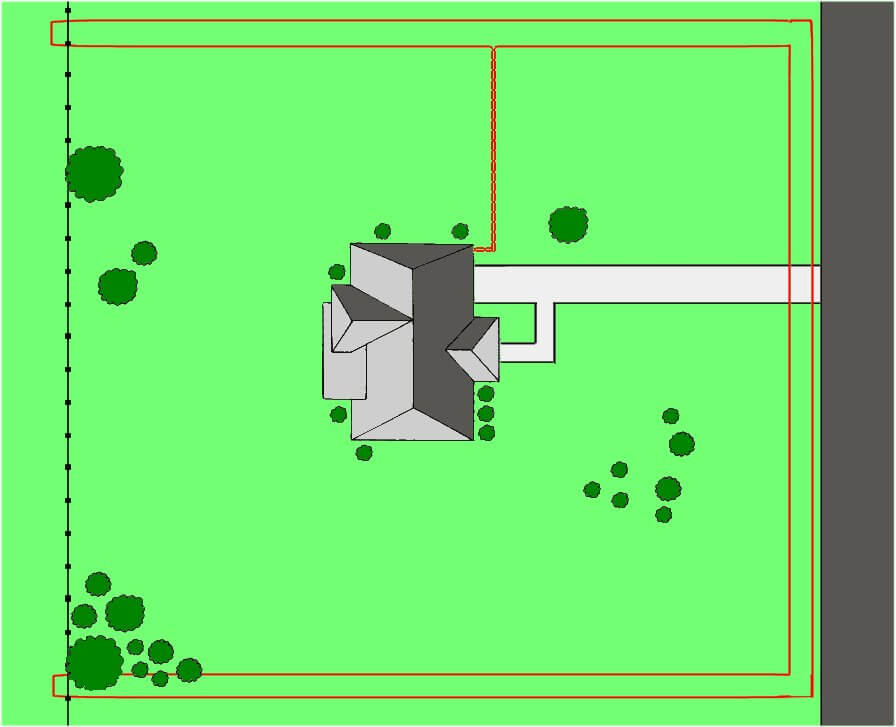
This type of boundary set up is a variation of the Double Loop Installation. This variation is used where existing fencing defines one or more sides of a yard. Works great if your neighbors have fences on one or more sides of your lot. Use Double Strand wire along the boundary where you have fencing.
Double Strand or Twisted Wire is used for the run from the transmitter (in Garage) to the gate. Using the Dual Strand Wire produces no boundary. 100 ft. of Dual Strand wire is included with the Innotek IUC-5100. You may purchase it separately for use with other systems or make your own by twisting 2 pieces of single strand boundary wire together.
This type of installation gives the dog access to the house.
Caution: You should avoid placing the wire close to metallic objects such as chain link fences. We recommend you lay the wire out and test the system with the collar prior to burial. You should also check to see if the collar is activated near the fence in other parts of the yard. If this is the case move your boundary wire further away from the fence.
Take care to not create a gap between the fields.
Gate Blocker Installation
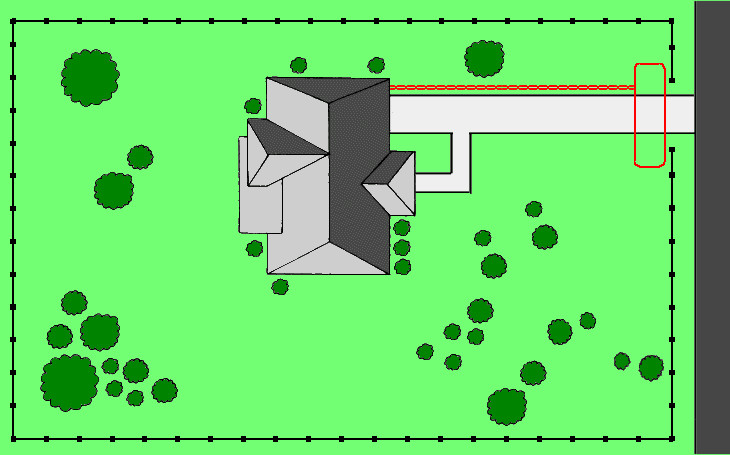
This type of boundary set up is a variation of the Double Loop Installation. This variation is used to block the dogs access to a gate or other opening in a fence or other boundary. Use Double Strand wire to connect the smaller inner loop to the boundary.
Double Strand or Twisted Wire is used for the run from the transmitter (in Garage) to the gate. Using the Dual Strand Wire produces no boundary. 100 ft. of Dual Strand wire is included with the Innotek IUC-5100. You may purchase it separately for use with other systems or make your own by twisting 2 pieces of single strand boundary wire together.
This type of installation gives the dog access to the house.
Caution: You should avoid placing the wire close to metallic objects such as chain link fences. We recommend you lay the wire out and test the system with the collar prior to burial. You should also check to see if the collar is activate near the fence in other parts of the yard. If this is the case move your boundary wire further away from the fence.
Take care to not create a gap between the fields. We also recommend that you block the area around the gate and not just the opening.
Run the wire through an existing seam or crack in the drive. Run the wire through an existing drainage pipe under the drive.
Caution : Since the wire will be deeper below ground your field width may be narrowed. We recommend you test the system in this area to be certain the collar is receiving a signal.
You may cut a concrete or paved drive using a circular saw with a masonry blade. After inserting the wire in the cut fill the cut with heavy caulk or asphalt patch.
Combination Installation
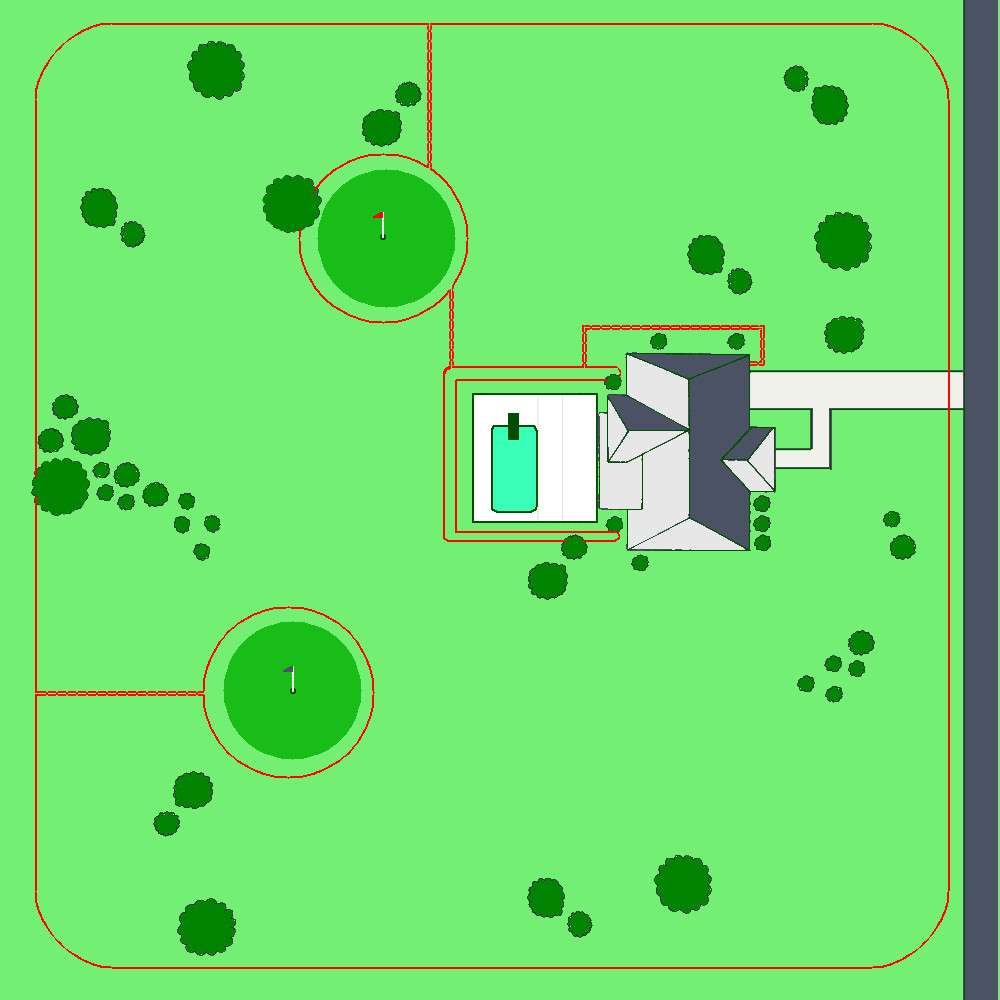
This installation is based on a real customer’s yard. He wanted to enclose his entire piece of property and keep the dogs off of his patio/pool area as well as off his 2 putting greens.
Double Strand or Twisted Wire is used for the run from the transmitter (in Garage) to the perimeter as well as between his various protected zones. Using the Dual Strand Wire produces no boundary. 100 ft. of Dual Strand wire is included with the Innotek IUC-5100. You may purchase it separately for use with other systems or make your own by twisting 2 pieces of single strand boundary wire together.
Using elements of the single loop as well as the double loop design he was able to define the boundaries exactly as he wanted.
Flower Bed Protection
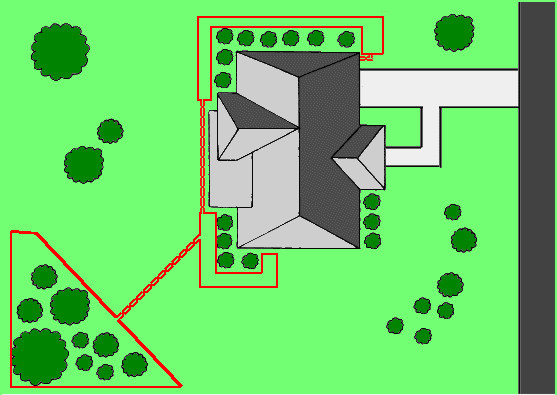
This type of boundary set up is a variation of the Double Loop Installation. This variation is used to block the dog’s access to a particular area in your yard such as flower beds or your garden. This type of installation can be used with existing fencing as well as other containment installations. Use Double Strand wire to connect the smaller inner loop to the boundary. The boundary wire can be buried in front of or inside the beds.
Double Strand or Twisted Wire is used for the run from the one bed to another. Using the Dual Strand Wire produces no boundary. 100 ft. of Dual Strand wire is included with the Innotek IUC-5100. You may purchase it separately for use with other systems or make your own by twisting 2 pieces of single strand boundary wire together.
This type of installation gives the dog access to the house.
Caution: You should avoid placing the wire too close the exterior walls of your home. The field can pass through the wall and your dog could receive stimulation indoors. We recommend you lay the wire out and test the system with the collar prior to burial. You should also check to see if the collar is activated near interior walls. If this is the case move your boundary wire further away from the wall.
Take care to not create a gap between the fields. We also recommend that you block the area around the gate and not just the opening.
Wireless System with Single Transmitter
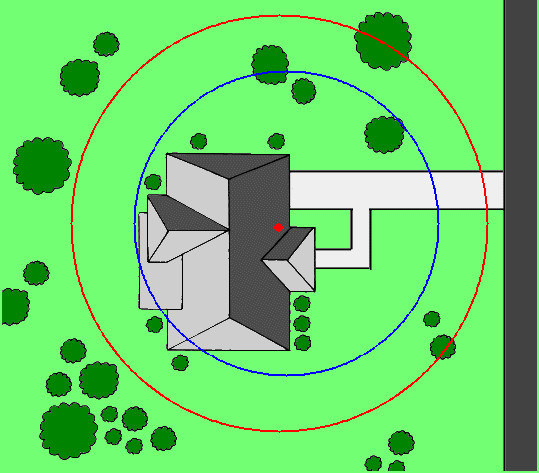
Wireless transmitter creates a circular containment zone with up to a 90 foot radius (180 feet across). Radius is adjustable (Blue Circle) to fit your property. Additional Transmitters may be added to enlarge the containment area.
Transmitters must be installed indoors.
Wireless System with Multiple Transmitters
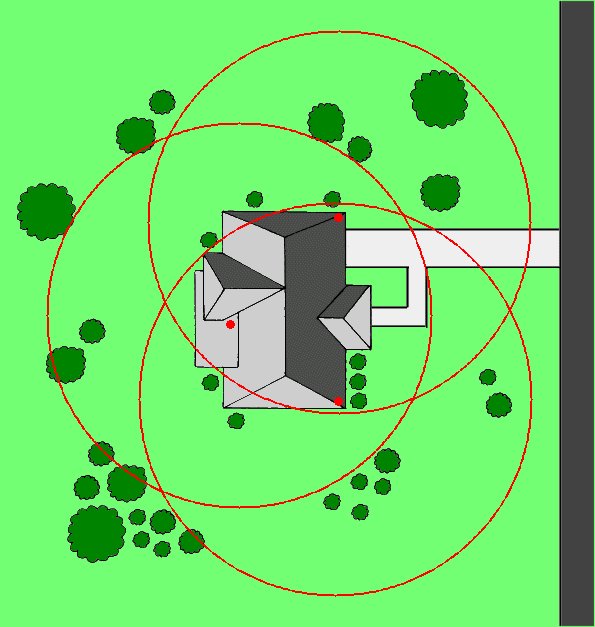
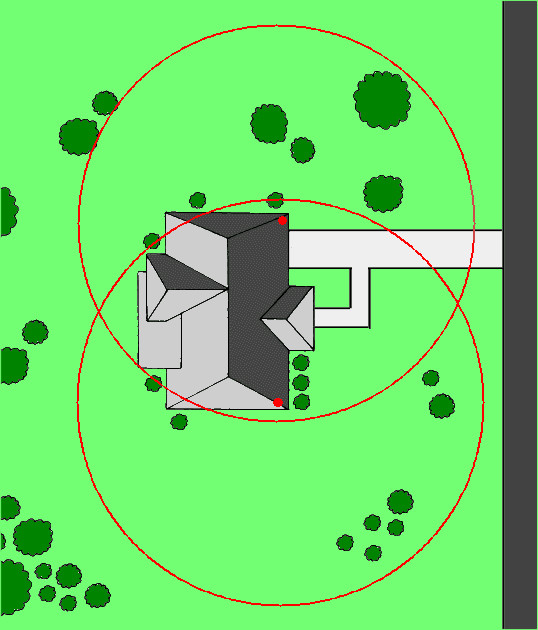
Multiple wireless transmitters create overlapping containment zones. The dog may pass from one zone to another without receiving a correction.
Each wireless transmitter creates a circular containment zone with up to a 90 foot radius (180 feet across). Radius is adjustable to fit your property. Additional Transmitters may be added to enlarge the containment area.
Transmitters must be installed indoors.
View our underground and wireless electric dog fences.

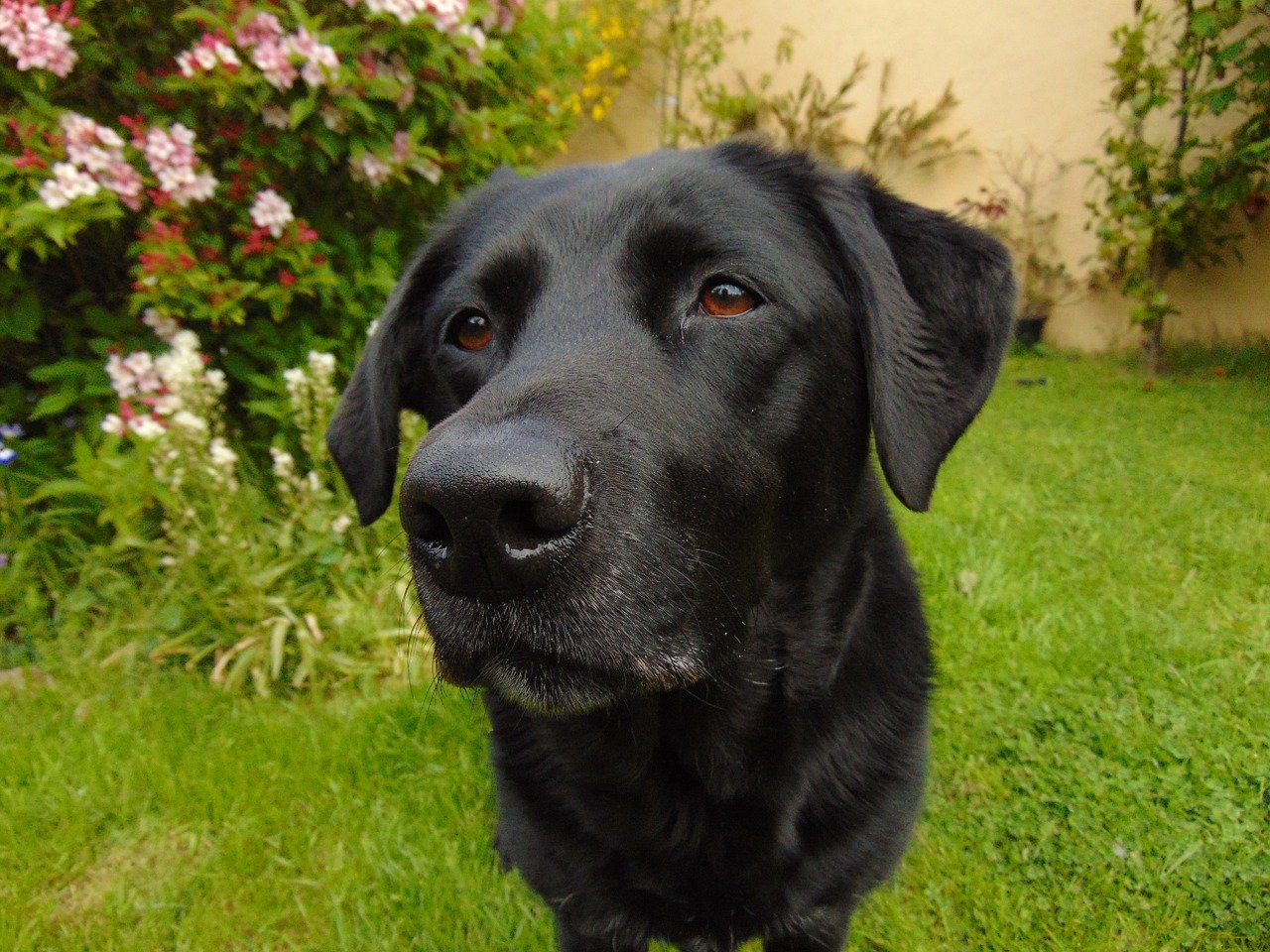

Subscribeto get the latest dog training articles, latest offers & news.
You have Successfully Subscribed!